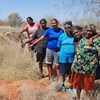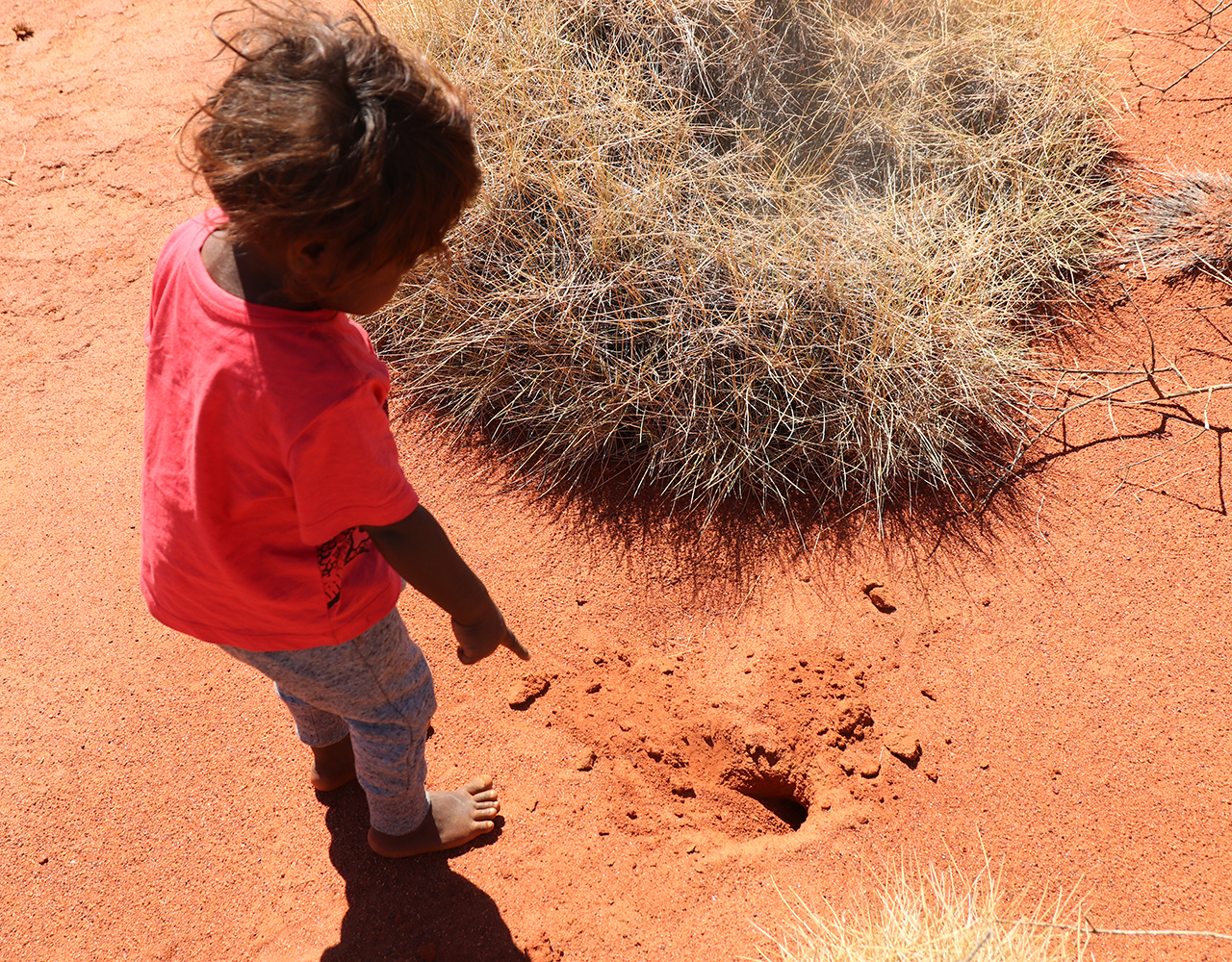
Kids learning to track Mankarr on Martu Country
Wednesday, 28 October 2020On the Martu Determination in the Western Deserts, Kanyirninpa Jukurrpa’s (KJ) Punmu Ranger and Families Programs are working together to teach important Traditional Ecological Knowledge about Mankarr (the greater bilby) to Martu children and their families. Kanyirninpa Jukurrpa Culture, Country and Communities Coordinator Tracy Carboon shares the fun of a recent outing.
The KJ Punmu Ranger and Families teams have been working together to teach the jijikaja (children) all about Mankarr (the greater bilby). The rangers have been demonstrating the “Mankarr search method” that was developed in conjunction with Martu rangers and elders and Threatened Species Recovery Hub ecologist Anja Skroblin from The University of Melbourne.
The Punmu Ranger and Families Program took a short drive from the community to an important Mankarr monitoring zone. The rangers shared their knowledge and taught the women and children who participate in the Families Program how to look for Mankarr mirrka (food), jina (tracks), jawana (diggings), ngurra (burrow) and kuna (scats). The women and children also learnt how to recognise if the Mankarr tracks were old or new and if the burrows were still occupied.
The children loved to follow the Mankarr tracks. They were excellent at finding diggings, travelling from one to another, as well as finding other signs of Mankarr. In addition to the Mankarr tracking, the children pointed out the termite mounds, a food source for Mankarr. The rangers guided discussions exploring what Mankarr could be eating, as there were not many food sources, such as lunki trees (witchetty grubs), minyarra (bush onions) or wurmurla (bush tomatoes) available at the survey site.
The rangers taught the women and the children how to use the survey field resources and complete the survey form. In the future, the Families Program team can conduct their own surveys when they are out on country.
 The women find a fresh Mankarr ngurra (burrow) alongside yuwinji, a grass that provides seed for food for Mankarr. Image: Kanyirninpa Jukurrpa
The women find a fresh Mankarr ngurra (burrow) alongside yuwinji, a grass that provides seed for food for Mankarr. Image: Kanyirninpa Jukurrpa
As the teams were driving to go back to Punmu community, Marissa Rogers, a participant in the Families Program, spotted a fresh burrow from the vehicle. Everyone decided it belonged to the Mankarr they had been tracking! The women also noticed an important Mankarr food source, yuwinji (grass seed, Eragostis eriopoda), growing nearby.
It was a fantastic trip with rangers sharing their knowledge and expertise with women and children from the Families Program and children increasing their English and Martu environmental vocabulary and learning how to track for Mankarr. Everyone involved was very proud and happy being out on Country teaching and sharing their knowledge with their children.
A Threatened Species Recovery Hub project supported the collaboration of Kanyirninpa Jukurrpa (KJ), Martu Elders and The University of Melbourne to co-develop a Mankarr monitoring program that is based on Martu priorities, Traditional Ecological Knowledge and tracking skills. The project is now complete, but KJ Ranger teams are continuing to use the survey method and to teach it to other Martu people. By detecting trends in Mankarr populations, the method will support Martu land managers in their management decisions, such as where and when to carry out burning or feral animal control.
Further information
Tracy Carboon - tracy.carboon@kj.org.au
Top image: The KJ rangers are teaching children how to find Mankarr ngurra (burrows) and tell whether they are occupied or not. Image: Kanyirninpa Jukurrpa
-
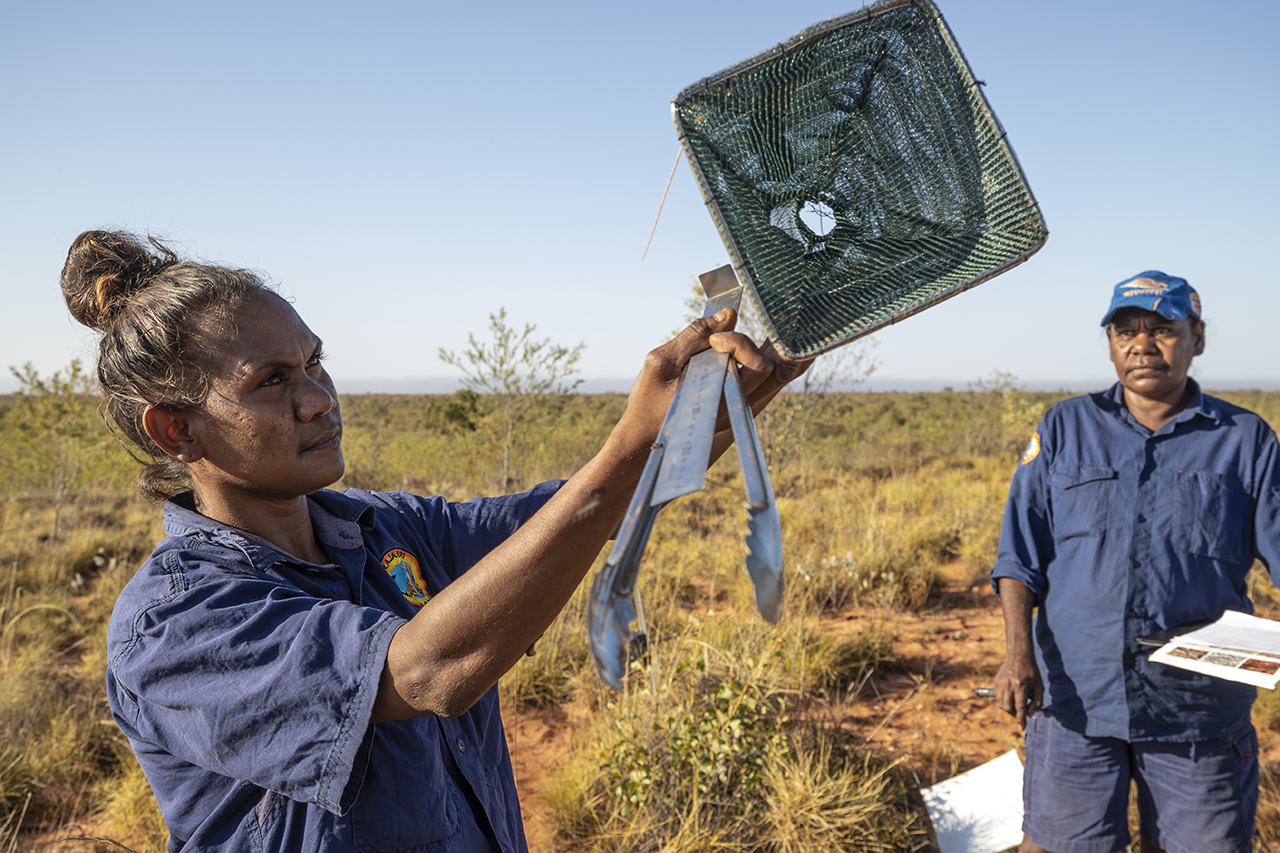
Indigenous Engagement Protocols: Forging respectful, meaningful partnerships for research impact
Wednesday, 21 October 2020 -
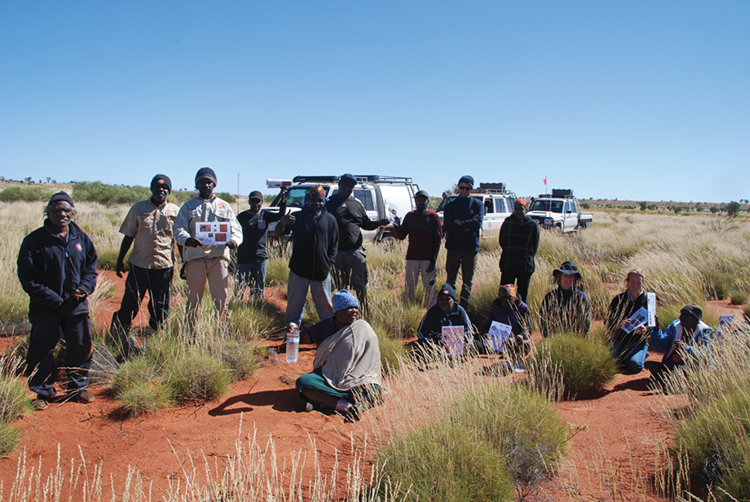
A Martu method for monitoring mankarr (greater bilby)
Tuesday, 20 August 2019 -
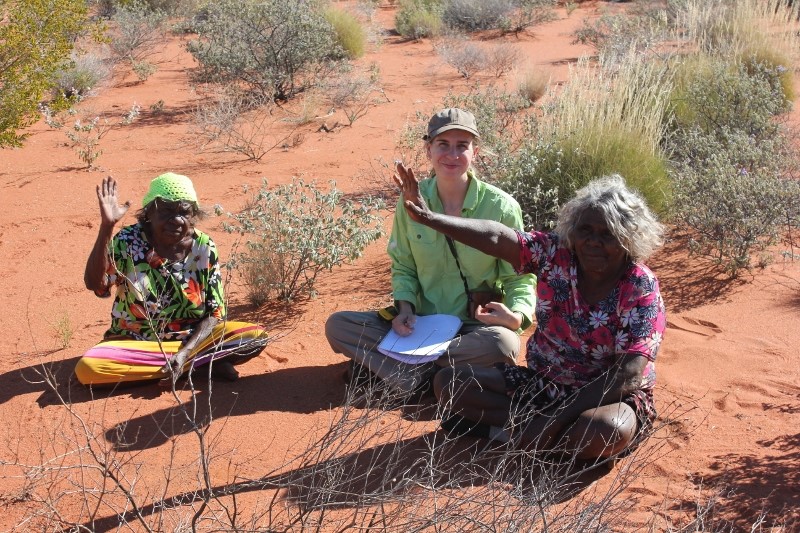
Designing a best-practice bilby monitoring program for Martu rangers
Thursday, 15 December 2016 -
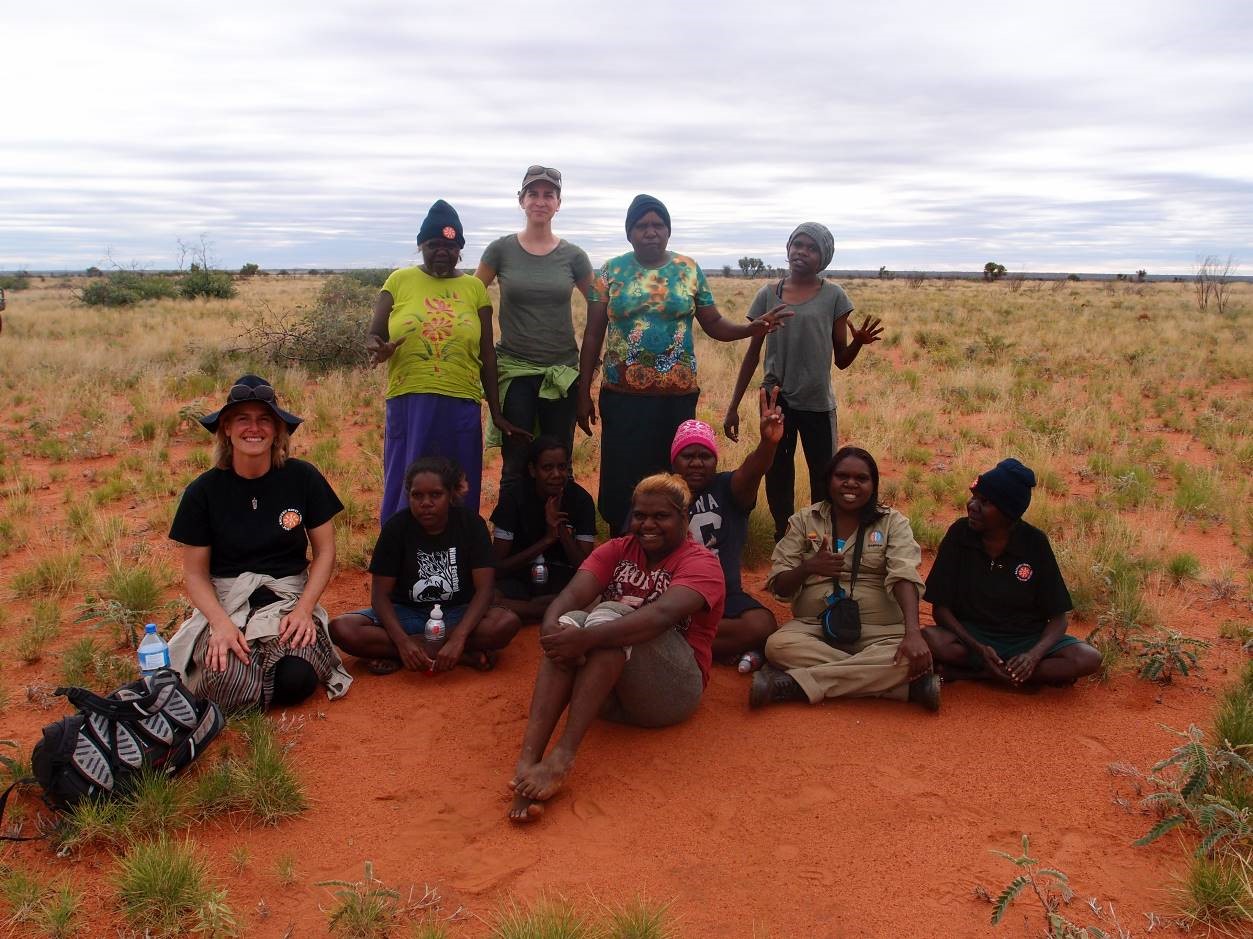
Endangered bilby connects communities across time and space
Wednesday, 06 July 2016 -
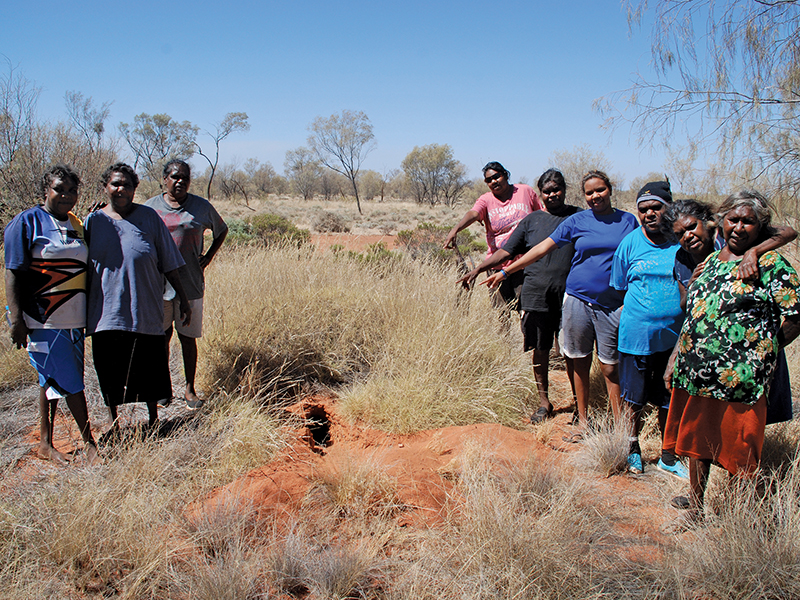
Indigenous land manager profile: Kanyirninpa Jukurrpa and Martu people
Tuesday, 30 June 2020 -

Building collaboration and two-way science
Sunday, 12 December 2021
